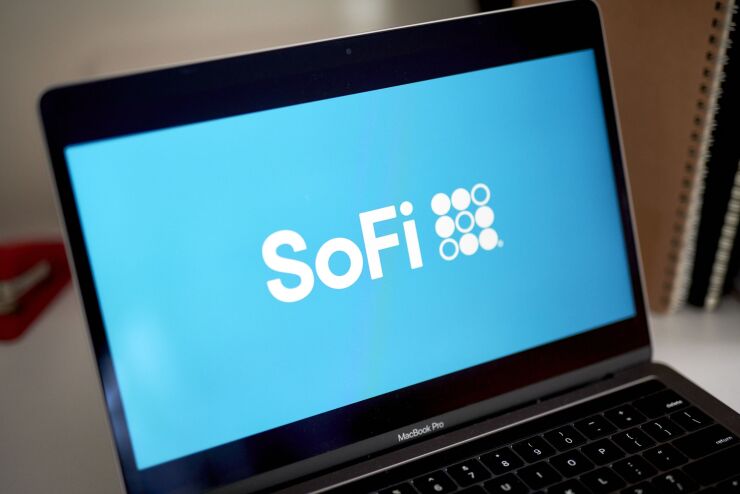SoFi Technologies says it's reaping the benefits of becoming a bank, which allowed it to pull in some $1.6 billion in deposits during the second quarter as other funding sources became more expensive.
The San Francisco-based company currently pays more for deposits than several other online banks, offering customers a 1.8% annual percentage yield on their money if they set up direct deposits.
But even if SoFi pays more than many competitors, its deposit-taking approach is significantly cheaper than the funding model it used before

"There couldn't be a better time to have become a bank," SoFi CEO Anthony Noto told analysts Tuesday.
SoFi's deposits grew to $2.7 billion during the quarter, a 134% increase from the first quarter of the year. About 80% of that total is from customers who set up direct deposits, giving those deposits higher "quality and stickiness," Noto said.
The comments come as competition
SoFi's 1.8% APY is lower than some competitors, such as Bread Financial's 2.15% APY on high-yield savings and a 2.07% rate offered by LendingClub — another fintech-turned-bank. But it beats the 1.65% APY offered by Synchrony Financial, a 1.5% rate at Discover Bank and the 1.4% rate at Ally Financial, according to DepositAccounts.com.
SoFi's deposits have "grown rapidly" thanks in part to its higher rates, according to Jefferies analyst John Hecht, who wrote to clients that the company pulled in $500 million more in deposits than he expected.
The deposits have also "provided security" for SoFi during a period of macroeconomic uncertainty and sharply rising interest rates, Hecht wrote.
Those conditions have led to higher funding costs for online lenders that do not have access to lower-cost deposit funds. One such company, Upstart Holdings, said
During SoFi's earnings call, Noto alluded to "suboptimal conditions," saying that the company's deposits mean it doesn't have to access the securitization market to secure funding.
The Federal Reserve’s aggressive tightening is putting some pricing pressure on digital banks that rely on high-yield savings accounts. But the increases are not keeping pace with the central bank’s rate hikes, and the caution may continue in the face of economic uncertainty.
SoFi reported a net loss of $95.8 million during the second quarter, below the $165 million loss it recorded in the same quarter a year earlier.
Its net revenues jumped to $362.5 million, up 57% from a year earlier, thanks in part to higher interest income on loans.
SoFi is
"Demand in this environment is going to be quite strong," he said.
The rise in personal loans helped make up for far fewer mortgage originations, which fell to $332.1 million during the quarter, down 58% from a year earlier. Student loan originations fell at a similar rate due to the continued payment moratorium on federal student loans, which resulted in fewer borrowers refinancing to private student loans.






